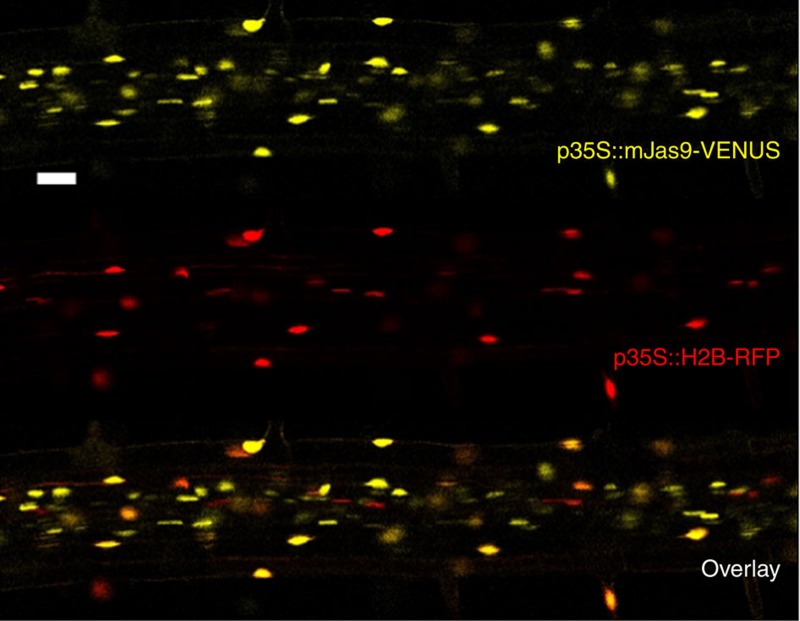Nature Communications 6: Article number: 604310.1038/ncomms7043 (2015); Published: January162015; Updated: February102016.
It has come to our attention that the control version of the Jas9-VENUS reporter construct reported in this Article, mJas9-VENUS, which consists of a mutated version of Jas9 fused to VENUS, does not contain a nuclear localization signal as described in Fig. 1a. The conclusion that degradation of the Jas9-VENUS reporter is dependent on jasmonate signalling in the nucleus remains unaffected by this error, as the reporter construct itself contains a nuclear localization signal, and the mJas9-VENUS control construct also localizes to the nucleus, even in the absence of this sequence (Fig. 4). As a result we do not foresee any practical implications for the use of either the Jas9-VENUS sensor construct or the mJas9-VENUS control.
Figure 4 | mJas9-VENUS localizes to the nucleus in the mature part of the root.
 Images show the mature root of a 5-day-old Arabidopsis seedling expressing the nuclear marker H2B-RFP and the mJas9-VENUS control reporter construct. Scale bar, 20 mm.
Images show the mature root of a 5-day-old Arabidopsis seedling expressing the nuclear marker H2B-RFP and the mJas9-VENUS control reporter construct. Scale bar, 20 mm.


